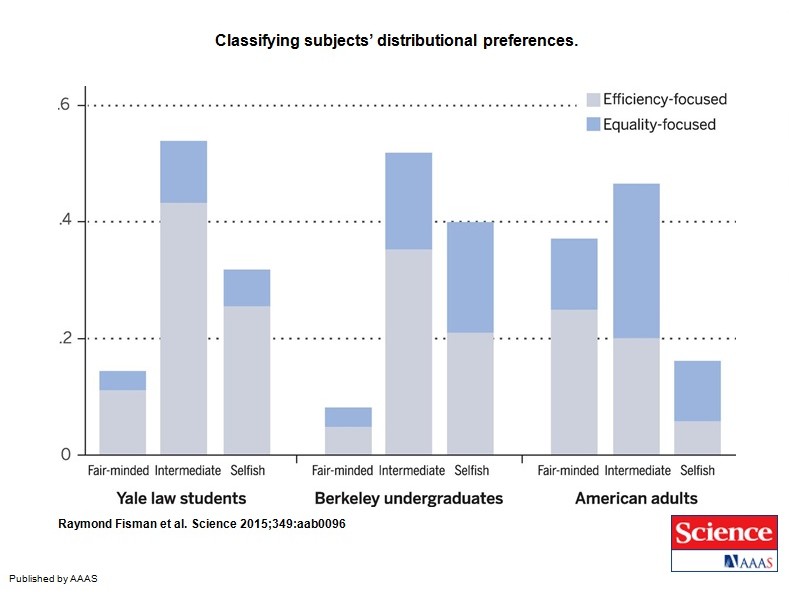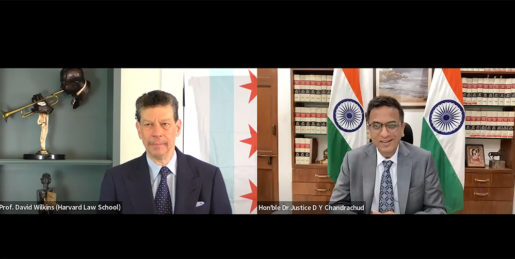With the buzz of election season, the coming months are ripe for further discussion of public policy and opinions regarding economic inequality. In the Republican and Democratic debates, presidential candidates voiced views on how the economy would operate under their watch, discussing a range of topics from taxes and entitlements to budgets and trade agreements. Nobel Prize–winning economist Joseph Stiglitz’s recently published book, The Great Divide: Unequal Societies and What We Can Do About Them, takes America to task on the inequality issue, arguing that economic equality has been a choice, not an unexpected outcome. And Federal Reserve economists Jeffrey Thompson and Gustavo Suarez published a paper in August highlighting troubling trends related to the racial wealth gap in the United States.
A research article titled “The Distributional Preferences of an Elite,” written by Raymond Fisman, Pamela Jakiela, Shachar Kariv, and Daniel Markovits and published last month in Science, has certainly added to the discussion. Though perhaps not the most obvious source of information related to public policy and economic inequality, Science has the largest paid circulation of any general-science, peer-reviewed journal and reaches an estimated global readership of more than one million.
The article centers on how distributional preferences shape individual opinions and public policy with respect to economic inequality and redistribution. The researchers measured the distributional preferences of an elite subset of the population—208 J.D. students at Yale Law School (YLS)—during the spring semesters of 2007, 2010, and 2013 and compared their preferences with those of three American Life Panel (ALP) samples: 309 subjects ages 40 and younger who are broadly representative of the U.S. population, and two groups of “intermediate elites”: highly educated, wealthy individuals and undergraduate students attending the University of California, Berkeley. The authors found YLS of particular interest because its students “are likely to assume future positions of power and influence in American society.” As a case in point, three of the nine Supreme Court justices, along with the current front-runner for the Democratic presidential nomination, are YLS graduates.
To determine the subjects’ distributional preferences, the authors conducted experiments that varied the relative price of redistribution—in effect, they varied the amount by which the “self’s” payoff must be decreased in order to increase the payoff of the anonymous “other.” The experiment was designed to test whether the subjects’ preferences were formally rational and to break down their preferences into two distinct tradeoffs: (1) between self and other (fair-mindedness versus self-interest) and (2) between equality and efficiency.
According to the study, fair-minded subjects place equal weight on the payoffs to the self and “other,” whereas selfish subjects do not place any weight on the payoff to the “other.” Subjects with distributional preferences that are weighted toward equality—or reducing differences in payoffs—increase the share of the expenditure spent on the “other” as the price of redistribution increases, whereas subjects with distributional preferences weighted toward efficiency—or increasing total payoffs—decrease the share of the expenditure spent on the “other” as the price of redistribution increases.

Source: AAAS
The study claims that its measure of equality-efficiency tradeoffs are predictive of such tradeoffs in distributional settings involving multiple “others” as well as the likelihood of voting for political candidates perceived as favoring more government redistribution. Additionally, it claims to be predictive of YLS subjects’ career choices, with those who were more efficiency focused being more likely to choose a career in the private sector after graduation and those who were more equality focused being more likely to choose nonprofit-sector employment.
The article asserts that this research “captures, in an experimental setting, a plausible measure of subjects’ attitudes toward actual redistributive policies.” According to the study, YLS subjects were more efficiency focused than their ALP counterparts drawn from the general population. Almost 80 percent of YLS subjects were found to be efficiency focused compared with just under 50 percent from the general-population sample. Despite this, the YLS subjects overwhelmingly—by more than 10 to 1—self-identified as Democrats, not Republicans. Moreover, YLS subjects were less likely to be classified as fair-minded and more likely to be classified as selfish, compared with the general-population sample. “Intermediate elite” subjects fell in between general-population and YLS subjects in terms of efficiency mindedness, but were more likely to be selfish and less likely to be fair-minded than YLS subjects.
According to the article, the findings demonstrate marked differences in distributional preferences between subjects with varying degrees of “elite-ness.” The piece arrives at the quite sweeping conclusion that “from a policy perspective, our results suggest a new explanation for the modesty of the policy response to the rise in income inequality in the United States: regardless of party, the policymaking elite is significantly more focused on efficiency vis-à-vis equality than is the U.S. public.”
Whether the results of the study can actually justify the article’s conclusions is debatable, but the study raises interesting questions about the relationship between public policy and economic inequality in America. One fairly chilling question is whether the article could be right that policies that increase economic inequality may be one of the few things that elites on both sides of the aisle can agree on.



